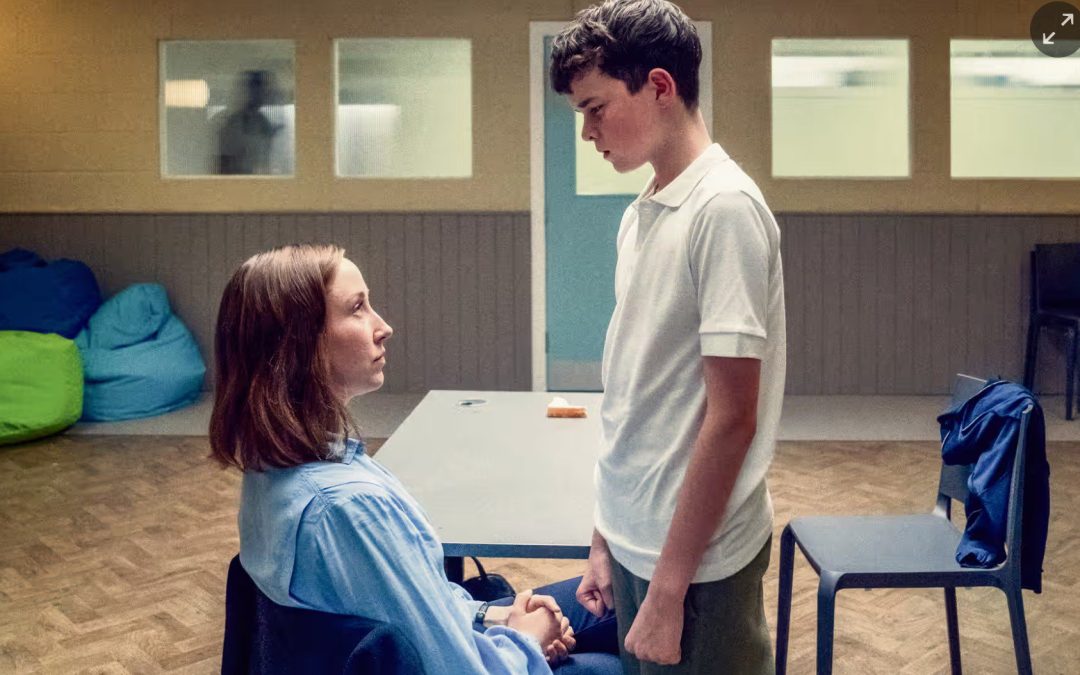The Netflix series Adolescence has sparked widespread discussion about trauma, societal disconnection, and the systemic failures that contribute to youth alienation. Rather than focusing solely on individual responsibility, the show presents a broader social critique—highlighting how intergenerational trauma, institutional shortcomings, and cultural expectations shape a young person's journey.
Psychologists and mental health experts have weighed in on the show’s powerful themes, emphasizing the need for a systemic approach to healing. In this article, I explore the key psychological insights into Adolescence, how the show reflects real-world struggles, and what can be done to foster healthier communities.
Understanding Trauma as a Systemic Issue
One of the most compelling aspects of Adolescence is its portrayal of trauma not as an isolated family issue but as a systemic problem. The protagonist, Jamie Miller, experiences rejection and emotional neglect—not solely because of parental failings, but due to a series of disconnections across different spheres of his life.
Intergenerational Trauma and Emotional Disconnect
Psychologists studying intergenerational trauma emphasize that trauma is often passed down through families, not just through direct experiences but through emotional patterns and learned behaviors. Jamie’s father and grandfather embody different expressions of suppressed emotional pain, struggling to connect in meaningful ways.
Rather than providing emotional attunement, they reinforce rigid notions of masculinity through activities like football and boxing. These traditional male bonding experiences, while valuable to some, fail to meet Jamie’s deeper need for emotional validation and understanding.
The School System’s Role in Disconnection
Educational institutions play a crucial role in a child’s development, yet Adolescence highlights how systemic shortcomings in schools contribute to social isolation. Teachers—overworked and lacking mental health training—often fail to recognize early warning signs of emotional distress. Jamie’s experiences of bullying, rather than being addressed in a supportive way, compound his feelings of alienation.
Research suggests that many schools lack the resources to build meaningful connections with struggling students. Instead of fostering inclusivity, rigid academic and social structures leave little room for those who feel different or rejected.
The Digital Age: A Double-Edged Sword
Another critical theme in Adolescence is the role of digital spaces in shaping young identities. For disconnected youth like Jamie, online communities provide a sense of belonging—but often at a dangerous cost.
Social Media and the Validation of Pain
Mental health experts have long warned about how online platforms can amplify negative emotions, providing echo chambers that validate destructive ideologies. Instead of finding genuine human connection, vulnerable youth may gravitate toward radicalized spaces where their pain is acknowledged but also manipulated.
Psychologists emphasize that digital connection should not replace real-world emotional support. When schools, families, and communities fail to provide a sense of belonging, young people are more likely to seek validation in harmful places.
Breaking the Cycle: The Path to Healing
If Adolescence teaches us anything, it is that blame alone is insufficient—solutions must be systemic. Healing requires a collective effort from parents, educators, policymakers, and communities.
Rethinking Masculinity and Emotional Expression
One of the most profound takeaways from the show is the urgent need to challenge outdated gender norms that discourage emotional vulnerability. Psychologists advocate for:
- Encouraging open conversations about emotions from an early age.
- Providing young men with role models who embody healthy masculinity.
- Expanding definitions of father-son bonding beyond traditional activities.
Creating Trauma-Informed Schools
Schools must become places of emotional safety, not just academic rigor. Experts suggest:
- Implementing early intervention programs for at-risk students.
- Training educators to recognize signs of trauma and emotional distress.
- Building peer-support groups to foster a culture of belonging.
Strengthening Community Connections
In an increasingly isolated society, building strong communities is essential. Solutions include:
- Investing in mental health resources accessible to all families.
- Encouraging mentorship programs that connect youth with supportive adults.
- Reducing economic pressures that force parents to prioritize survival over emotional attunement.
Final Thoughts: A Call for Collective Responsibility
The Netflix series Adolescence serves as a mirror to society’s deep-rooted failures—urging us to rethink how we nurture and support young people. Psychologists stress that healing requires moving beyond blame and embracing a collective responsibility to create environments where every child feels seen, valued, and connected.
By addressing the broader societal conditions—economic stress, rigid gender roles, underfunded schools, and the pitfalls of digital culture—we can begin to foster a world where stories like Jamie’s become far less common.
Frequently Asked Questions (FAQs)
1. What is the main message of Netflix's Adolescence?
The series explores how trauma is not just a family issue but a systemic one, influenced by societal disconnection, toxic masculinity, and institutional shortcomings.
2. How does Adolescence depict intergenerational trauma?
It shows how emotional pain and unprocessed trauma are passed down through families, affecting how parents connect with their children.
3. What role does social media play in the series?
The show highlights how disconnected youth turn to online communities for validation, sometimes leading them toward harmful ideologies.
4. How can schools help prevent youth alienation?
By implementing trauma-informed education, providing mental health resources, and fostering a sense of belonging among students.
5. What are the psychological takeaways from Adolescence?
The series emphasizes the importance of emotional attunement, the dangers of societal isolation, and the need for systemic solutions to youth disconnection.
6. What steps can parents take to support their children emotionally?
Encouraging open communication, challenging rigid gender roles, and fostering emotional connection beyond traditional activities.
Netflix’s Adolescence is more than just a drama—it’s a wake-up call to society. By taking psychological insights seriously, we can work toward a future where every child has the support they need to thrive.

